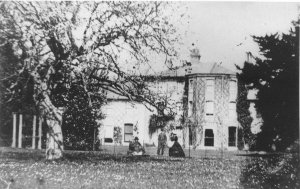Opposition to EB within the Asiatic Society.
Possibility of establishment of a zoological garden at Calcutta.
Has seen Gallus varius alive for the first time.
Will procure domestic pigeons for CD; could CD pay for them by returning hardy creatures, such as macaws and marmosets, which EB can sell for a high price in India?
Does not recall his authority for genealogy of the asses of Oman. If a genuine wild ass exists EB believes it will be in south Arabia.
Infertility of Irish and Devon red deer.
Details of an unusual species of wild dog.
Fertility of canine hybrids. General tendency toward hybrid sterility.
Has skins of hybrid Coracias and the parent species.
Wide-ranging species; skua found in Europe and Australia, but not in the tropics.
CD finds Alphonse de Candolle very useful, though JDH has low opinion.
CD argues for accidental introductions explaining some odd distributions, e.g., New Zealand vs Australian plants.
CD's method.
Diverging affinities in isolated genera.
Comments on species with disjoined ranges; does not feel, despite CD's expectations, that they tend to belong to small families.
Gives the proportion of U. S. trees in which the sexes are separate [see Natural selection, p. 62].
Glad to hear of MTM's papers [? "On a peloria and semidouble flower of Ophrys aranifera, Huds.", J. Linn. Soc. Lond. (Bot.) 8 (1865): 207-11 and "Observations on the morphology and anatomy of the genus Restio, Linn.", J. Linn. Soc. Lond. (Bot.) 8 (1865): 211-55].
CD doubts the value, for origin of species, of parallels between peloria in "distinct groups".
Gärtner proved the stigma can select its own pollen from a mixture of foreign pollens. But much evidence shows varieties of same species are prepotent over a plant's own pollen.
MTM's father [William] believes that variation goes on for a long time once it has commenced.
JDH has settled the Leschenaultia case, but it remains a difficulty to CD.
Goodenia, like bee orchid, seems a case of a structure with an evident function, which is not carried out. Is curvature of styles an incidental result of growth or a pollination adaptation?
Wants to hear from readers about the way in which the bee-orchid (Ophrys apifera) is fertilised. He has always found it to be self-fertilised but greatly doubts that the flowers of any plant are fertilised for generations by their own pollen. The bee-orchid has sticky glands, which would make it adapted for fertilisation by insects; this makes him want to hear what happens to its pollen-masses in places he has not observed.
CD's response to criticism of natural selection. Exasperated at not being understood. He tries to narrow the gap between himself and JDH.
Discusses recent reviews of Origin and has made a note on Owen's [see 2737].
Has become interested in the floral structures of orchids.
Notes his recent observations on Primula; believes he has found male and female forms.
On what kind of moth have pollen-masses of orchids been found cohering? Will ask Mr Parfitt if he is certain he recognised pollen-masses of bee orchid. CD thinks green masses were those of true Orchis.
[In P.S., having received a letter on subject from HTS responding to same query published in Gard. Chron. 9 June 1860:] It is extremely curious that the same moth has been found with pollen-masses in two parts of England.
Progress of [Thomas?] Thomson and G. H. K. Thwaites on accepting mutability.
Bee orchid pollination.
JDH has written to CD on homologies of stigma in Goodeniaceae.
Darwin Correspondence Project
darwin@lib.cam.ac.uk
© University of Cambridge 2022
Website by Surface Impression



© 2024 University of Cambridge
